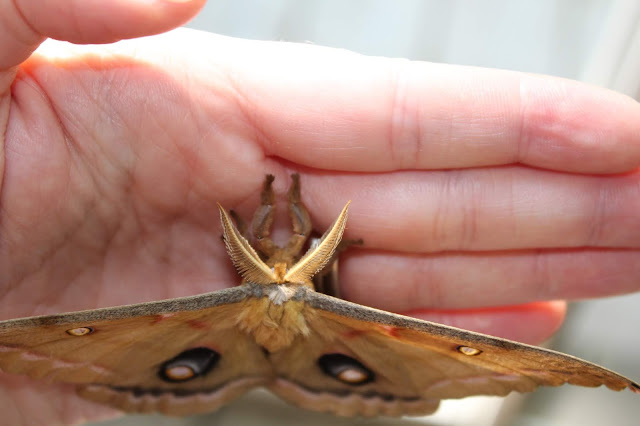There was a lot of odonate love in the air....they really do contort into amazing positions for procreation. I believe these are familiar bluets (Enallagma civile).
See how they make a sort of sideways heart shape? I think that's kind of cute.
This is another bluet, but I'm not sure which species. They can be very tricky to identify because they have very similar markings. There are tiny differences in the tail appendages but this shot isn't clear enough to show those.
This is a band-winged meadowhawk (Sympetrum semicinctum). It is easier to identify because of the brown tinge in the wings.
Here, just for some variety, is a tri-coloured bumble bee (Bombus ternarius) on goldenrod.
This is another meadowhawk, but I can't identify it because there are several that look similar to this. It is probably either the cherry-faced or white-faced meadowhawk (S. internum or S. obtrusum). I love this picture because of the shadows of the wings - it makes it look like it has 8 wings instead of 4.
Here are a couple more bluets, but these are less acrobatic at this point. They fly around stuck to each other like this. Fascinating.
This is one of the big dragonfly species - a darner. I can't tell which one because I couldn't get a side view shot of it, and the side markings are how you identify these critters. Still, I love this shot of its eyes. They are simply amazing to look at.
This is almost certainly a white-faced meadowhawk (Sympetrum obtrusum).
This bluet posed nicely for me. Probably a familiar bluet.
This is a male slender spreadwing (Lestes rectangularis). Look at those blue eyes!
This is a spotted spreadwing (Lestes congener), which an expert helpfully identified for me. I post many of my sightings to iNaturalist, which is a great place for citizen science. Experts can help identify all forms of life that are posted there. You can post pictures of plants, insects, animals and birds, even fungi and lichen!
The white-faced meadowhawks were busy ensuring the future survival of their species as well.
They look like a two-headed creature in this shot! Who does the driving?!
I took some other insect pictures, including this mud dauber wasp. What a weird conformation - look at how the abdomen is connected to the thorax with such a thin strip. I love the stripey legs!
Here's a regular ol' two-striped grasshopper, hopping in the grass.
And here, one of the strangest things I saw on my walk, is what I initially thought was an interesting fungus growing on a branch. Turns out that it isn't fungus at all. It's a species of aphid called the cottony alder psyllid (Psylla floccosa). The nymph stage produces this weird-looking cottony "fluff" on alder branches. Definitely a new find for me. You just never know what you'll see on a walk in the park.





























